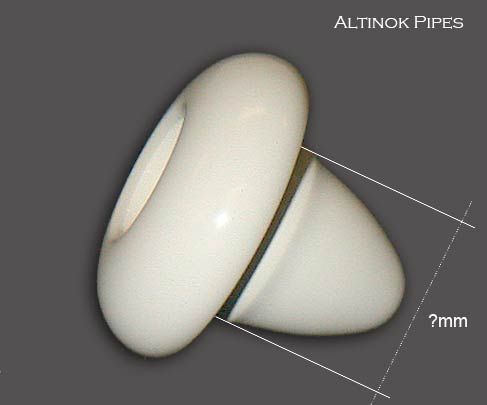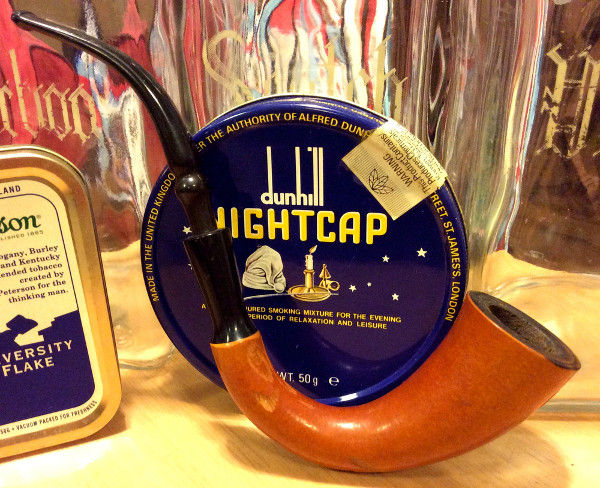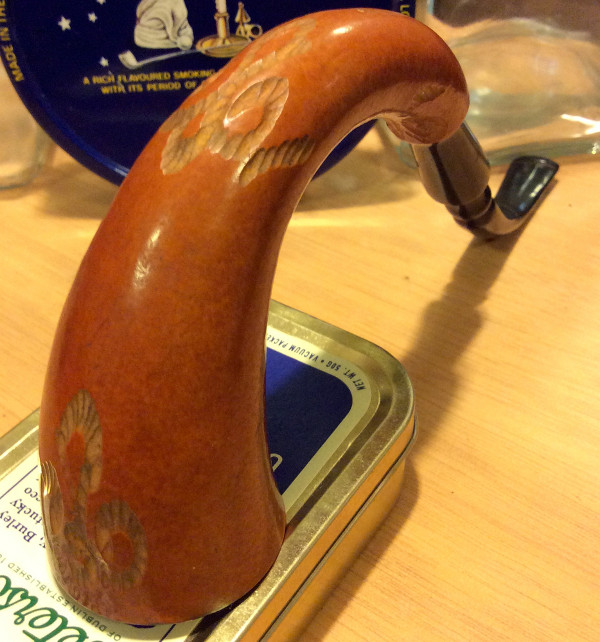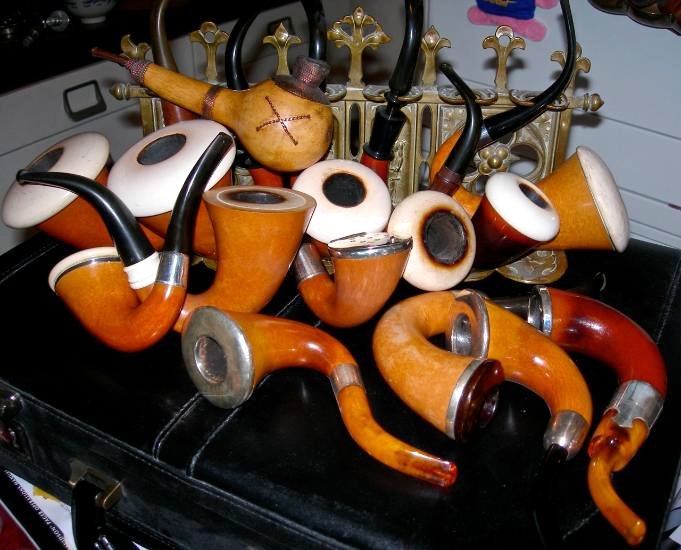Houston, we may have a problem here...
d..., thanks for the PM, much appreciated, although I would respectfully request that you drink a quart of cranberry juice before, uh, proceeding.
Two things, maybe three (you know me). First and most important is that you are absolutely right: the primary reason for the removeable ("outie") inserts is to allow cleaning of the goop that collects in the gourd. Thus, I think you are right on target in re cleaning, and the problems of my permantly affixed "innie". Ouch. Double ouch.
Next up, if you have a moment check the original listing by the Viking Club:
http://vikingclubpipes.bigcartel.com/ca ... eous-pipes
As you will see they have listed four Calabash, two classic removeable bowls, two with what they call "internal meerschaum bowls". Defects if any are noted. The Club itself is a real pipe club that apparently meets monthly, with a part of the sales benefiting the club, found positive remarks on the net, so I'm guessing they're straight up.
In their descriptions of the two internal bowls,
they note that this style often comes with a metal cap (not bowl) or rim placed over the internal meerschaum bowl. If you look in the middle row of the group of pipes pictured in my last post above, you will see an internal just like the one I bought, and like the two at Viking Club - without any metal cap/rim. The point: it appears the internal bowls were indeed made. Those are not metal bowls, just caps, or decorative rims. But there is also the possibility that these metal caps were somehow attached to the internal bowls in a fashion such that the metal cap and bowl could be removed as a unit.
So many fackin questions, and yes, the pipe is still enroute, lol...
This of course, still doesn't address the continuing issue of cleaning the goard with these internal designs. My original research failed miserably when I read that cleaning is not an issue, particularly if the pipe is used lightly, and that even one manufacturer did not recommend removing the inserts. In a word, my research sucked.
Thanks - I think - to da'Rum for correctly raising the issue. Of course the stem and mortise are cleaned with each smoke, easily done. Further research indicates that the gourd itself should be cleaned - not nearly as often - but on a regular basis (eg every 15 or 20 smokes), a task made relatively easy (with care) by removing the "outie" insert. Apparently the cleaning is done with the usual alcohol, etc, taking care not to wet the cork rim.
So, still an issue.
So do I have (a) a return or (b) a lovely, non-smoking display?
Unfortunately, the pipe is enroute. So meanwhile, I dropped an email to ask the magic question - is that internal insert really permanent, or can it be removed? And if the former, is there a way to clean it? And last of course, is it returnable (although I rather like it anyway, if only for a neat display)?
Meanwhile, I did run across a video on cleaning a Calabash in which a classic bash was cleaned. Naturally he removed the meer bowl, then positioned the gourd like a "U", with both opening facing up, and the curve of gourd down (where the nasties are). He then poured in a dram or so of alcohol but only enough to perhaps cover the bottom 2/3 or 3/4 of the "U" (the idea is to keep the alcohol away from the cork lip and the ferrule area). After a bit of a soak, he poured it out via the ferrule, then used Q-tips, and PC's to swab out the crapola.
Then it occurred to me! Stand back, idiot at play... yes, yes, why couldn't I do the same thing, but instead inject the alcohol through the ferrule, such that the internal bowl would not be touched, but the nasty bend would? And then to drain and clean it via the ferrule opening? Perhaps even a shank brush? Hmmm...
I've also located a alleged Calabash expert over at Puff.com for more information. We'll see...
Flat Ass Bottom Line
1. Although I'm convinced these internal meer bowl Calabi were indeed made, per da'Rum one has to wonder how indeed they were cleaned? Is there a tricky way to remove the internal bowl? Are they cleaned via the small opening? Or were these "infernal bowls" (pun intended) simply less expensive, smoke em til they stink, then replace em pipes? Cobs for detectives, lol...
2. da'Rum remains the master of this section, and still for good reason. And I pray he likes cranberry juice.





